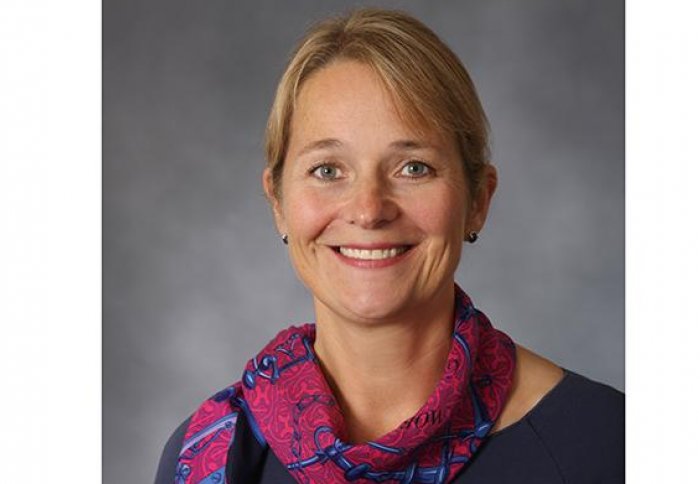Working to Engineering a Better World: pursuing Dennis Gabor's vision

Naomi Climer, President of the Institution of Engineering and Technology, inspired a full audience at the recent Dennis Gabor Lecture.
The theme of Naomi's lecture was how the future cannot be predicted, but can be invented; and drew on Professor Gabor’s 1963 book Inventing the Future which discussed the three major threats to modern society: war, overpopulation, and the Age of Leisure. She challenged engineers in the room to talk passionately and confidently about their work and the impact it has on society.
Naomi began with an overview of her career starting out as a graduate engineer with the BBC World Service, later moving to ITV, then Sony where she spent the past three years in California as President of Media Cloud Services. Early in her career she joined the IET’s Communications Policy Panel, joined the IET’s Board of Trustees in 2010, and was elected President in 2015.
Naomi is also Chair of the UK Government (DCMS) Future Communications Challenge Group looking at technology opportunities for the UK such as the development of 5G and the Internet of Things. There are significant technical challenges to overcome to bring these advances to life. It is predicted that by 2019 there will be 2 billion people and 20 billion devices connected to the internet. Challenges are to make the internet ultra-secure, reliable, and energy efficient. There will have to be unprecedented collaboration between producers, governments and countries.
The Internet of Things will be truly revolutionary, capable of helping society address challenges like our aging population. With the shift in the way information can be shared and communicated, Naomi believes we are also within reach of making affordable healthcare and education accessible to the world. The speed at which the world is changing was emphasised through a video in which she predicted what her life will look like when she is 84 years old.
“On waking up the curtains open automatically, a single pill containing all daily medication is printed out, smart fabric supports ageing limbs, and sensors help guide around the house. A holographic kitchen leads to breakfast with family members who live in a different country. Into the driverless car which provides a tailored news feed and the opportunity to watch Dr Who (she’s great!) during the journey." This is Naomi Climer’s vision of her life in 2050.
A consistent theme was that engineers should articulate the big picture, acknowledging that young people increasingly want to understand how they will make a difference in the world. Appealing to a wide range of motivations is necessary to recruit the best talent, and the best technology will be developed by engineers that are representative of the general population and thus understand people and their needs.
Engineers are only going to be more and more important; there are so many big global challenges and small local challenges that we need to crack, including changing the way engineering is being presented to girls and their parents to make it more appealing.
So much is going to be different in the future and it is all based on engineering. The IET is working to improve understanding of the value of engineers, to influence government and the media, and to inspire and inform the next generation of engineering students. Every engineer is a role model, so don’t be self-effacing – take any and every opportunity to talk about what you do!
Dennis Gabor won the Nobel Prize for Physics in 1971 for his invention of holography, a system of lensless, three-dimensional photography that has many applications. He joined Siemens and Halske in Berlin in 1927 as a research engineering. He left Germany in 1933 and worked for Thomson-Houston Company in England. He conceived the idea of holography in 1947. In 1949 he joined the Electrical and Electronic Engineering Department at Imperial College London and became Professor of Applied Electron Physics in 1958. He died, aged 78, in 1979. His other work included research on high-speed oscilloscopes, communication theory, physical optics and television. He was awarded more than 100 patents.
Article text (excluding photos or graphics) © Imperial College London.
Photos and graphics subject to third party copyright used with permission or © Imperial College London.
Reporter
Hannah Barclay
Faculty of Engineering
Kay Hancox
Department of Electrical and Electronic Engineering